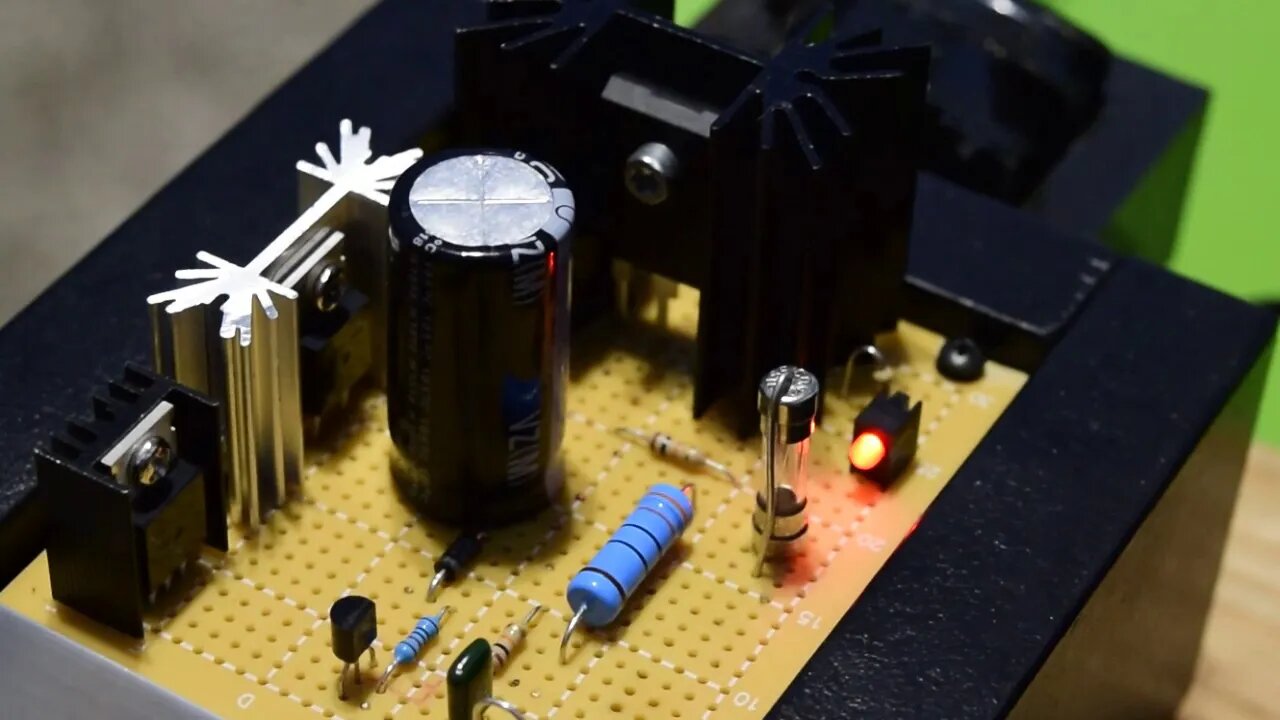Premium Only Content

This is the best radiant charger circuit so far. Uses off the shelf parts, no computer chips.
Download a drawing of the circuit here: https://ritalie.com/store
This circuit is different than others, and it delivers the most power possible, through the output transformer. Other circuits generally do not deliver 100% of the energy through the power transistor. This one does. Using a very small HVAC transformer, it delivers huge power into a 12 volt battery.
Wanting to help people with a non computerized, non timer based circuit, I created this new circuit.
A principle used in this circuit involves converting the smooth analog waves, into very sharp, digital pulses (without using complex parts). Sharp switching creates radiant energy. The sharper the switching, the cooler a given circuit can run, and the less heat sinks you need.
This circuit runs so cool that the primary transistor only runs at approximately 80 degrees F, just above ambient. This circuit uses 12 volts, and 1.5 amps of power, to put out 650 volts of radiant energy, which is almost entirely devoid of current.
You can put a load on the output and it will only put out a very small current, but it releases a very high output voltage. The output voltage can be used to charge any type of lead acid battery, from 6 volts, or higher.
The transistor is an automotive grade, special, voltage protected transistor, which is the most durable transistor available. It is protected against over voltage, and is designed for use in automotive ignition systems.
It can be run without any worry of ESD damage or over voltage damage, as the special transistor automatically limits voltage to 450 volts, when the circuit is running in an unloaded state.
However, you do not want to run the circuit without a load on it for long periods of time, you should always try to have a battery being charged, or you can use this circuit to power a fluorescent light, a capacitor, or some other special application. But the circuit is designed for use as a Radiant Battery Charger.
The beauty of this circuit is that it uses an off the shelf HVAC transformer, which can be had for $20 on eBay or found free on old HVAC equipment.
You can also use any 12 volt transformer that has similar specifications, which is shown in the diagram. I've posted the initial draft, hand drawn, circuit diagram for this circuit, for free. See link below.
-
 4:36
4:36
BIG NEM
7 hours agoThe Sad Truth About How Our Cannabis is Grown
6.14K4 -
 3:07:08
3:07:08
Price of Reason
12 hours agoMainstream Media FEARS Extinction! Gladiator 2 Review! New DnD SCANDAL!
48.2K7 -
 LIVE
LIVE
Fresh and Fit
8 hours agoIsrael-Hezbollah Ceasefire & Reacting To Death Threats On X
5,332 watching -
 1:11:10
1:11:10
Steve-O's Wild Ride! Podcast
5 days ago $9.14 earnedDusty Slay Went From Selling Pesticides To Having A Netflix Special - Wild Ride #244
32.9K3 -
 1:16:02
1:16:02
CocktailsConsoles
6 hours agoBE PART OF THE GAME!!| Death Road to Canada | Cocktails & Consoles Livestream
23K1 -

Phyxicx
8 hours agoWe're streaming again! - 11/26/2024
19.6K -
 6:49:31
6:49:31
GamingWithHemp
8 hours agoHanging with Hemp #103
38.7K3 -
 21:24
21:24
DeVory Darkins
1 day ago $10.88 earnedElon Musk and Tucker Carlson SHATTER Left Wing Media
39.2K36 -
 15:13
15:13
Stephen Gardner
5 hours ago🔥Breaking: Trump JUST DID the UNEXPECTED | Tucker Carlson WARNS America!
34.7K73 -
 1:18:01
1:18:01
Glenn Greenwald
10 hours agoWill Trump's Second Term Promote Economic Populism? Matt Stoller On Cabinet Picks To Fight Corporate Power; Should Liberals Cut Off Pro-Trump Friends & Family? | SYSTEM UPDATE #372
175K202